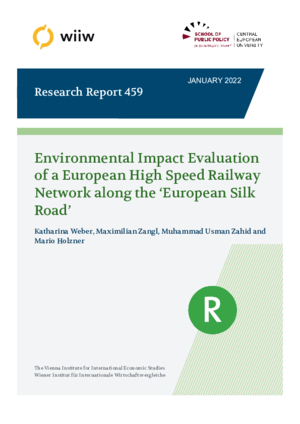Environmental Impact Evaluation of a European High Speed Railway Network along the ‘European Silk Road’
Mario Holzner, Katharina Weber, Muhammad Usman Zahid and Maximilian Zangl
wiiw Research Report No. 459, January 2022
36 pages including 10 Tables and 6 Figures
In a study published in 2018 the Vienna Institute for International Economic Studies (wiiw) proposed the construction of a ‘European Silk Road’ encompassing a high-speed railway (HSR) network for Europe. To compliment the economic feasibility analysis by wiiw, this report aims to determine the environmental impact of the suggested northern core route – from Lyon to Moscow – by focussing on the net greenhouse-gas emissions, in CO2-eq.. The study uses a life cycle assessment (LCA) for the analysis of construction, maintenance, operation, and disposal of the HSR, to provide an estimate of how many tons of CO2-eq. can be saved over the span of 60 years. In generating a modal shift from road and air transport, the construction of an HSR line provides the potential for saving up to 10% of net CO2-eq. emissions in the EU27 for one year. Thus, the proposed high-speed line contributes to the current targets and goals of the European Union to reduce emissions and present smart, sustainable and inclusive economic solutions.
Keywords: Infrastructure, Transport, High Speed Rail, Environmental Effects
JEL classification: H54, R42, L92, Q51
Countries covered: European Union, Wider Europe
Research Areas: Sectoral studies
